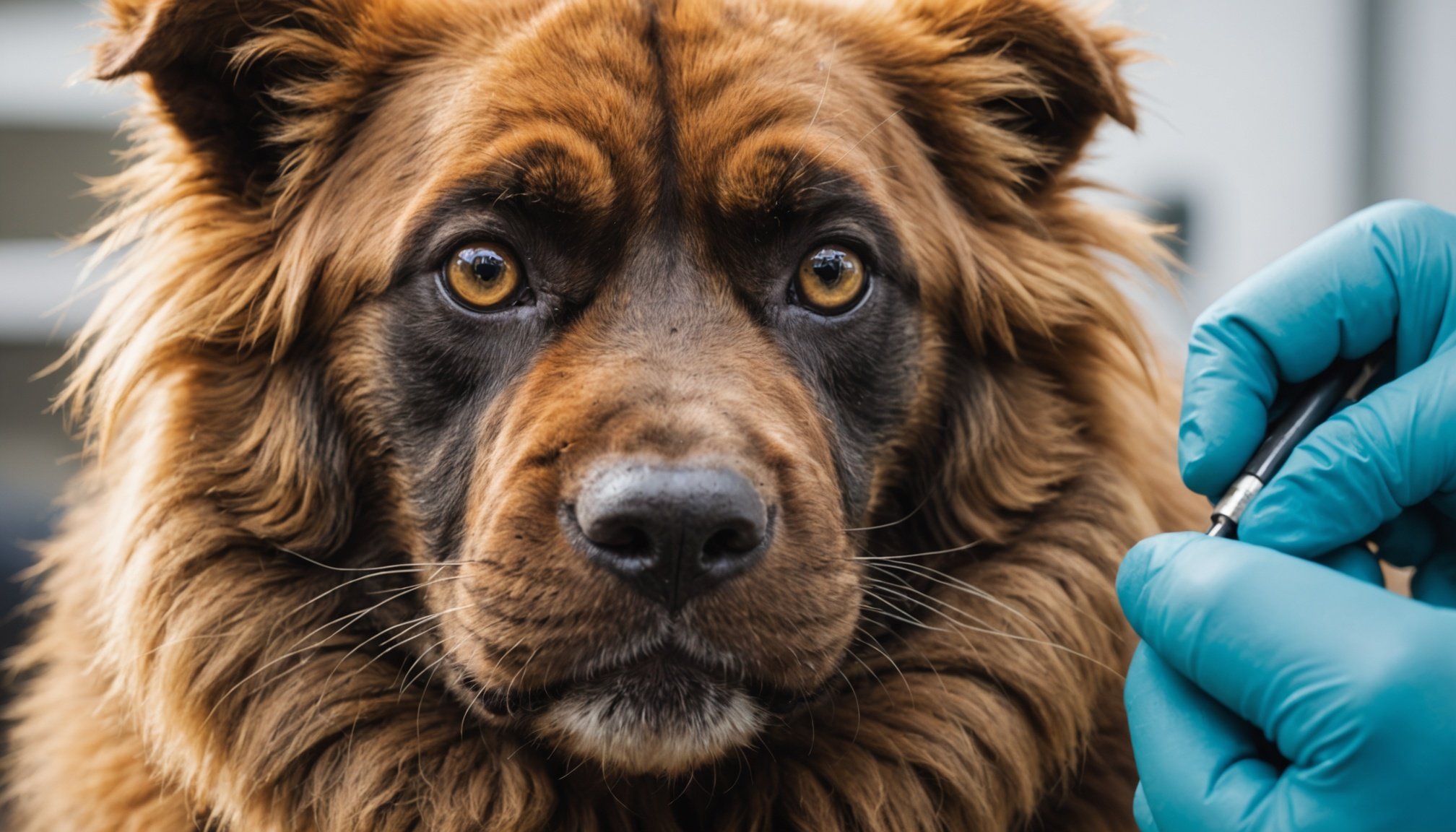As UK veterinarians face the rising trend of imported exotic pets, understanding the complexities of exotic diseases is essential. This comprehensive guide offers effective strategies for diagnosis and management, equipping professionals with the tools to enhance their practice. With actionable insights and up-to-date research, veterinarians can ensure optimal care for these unique pets while safeguarding public health. Explore innovative approaches and case studies that highlight best practices in this evolving field.
Overview of Exotic Diseases in Imported Pets
Understanding the risks associated with exotic diseases in imported pets is crucial for UK veterinarians. These diseases are those not commonly found in the UK, often introduced by the rising number of pets brought from abroad. This trend poses significant health challenges.
Also to read : Boosting Post-Lung Transplant Recovery: Innovative Minimally Invasive Techniques for UK Thoracic Surgeons
In recent years, the UK has seen a notable increase in imported pets, with thousands entering the country annually. According to the Pet Food Manufacturers' Association, over 40% of UK households own a pet, and a growing portion of these are from international origins. This surge heightens the risk of exotic diseases, which can spread rapidly and affect both animals and humans.
Common Exotic Diseases in the UK
- Rabies: A viral disease that affects the central nervous system.
- Leishmaniasis: Caused by parasites transmitted through sandfly bites.
- Heartworm: A serious disease caused by foot-long worms living in the heart, lungs, and blood vessels.
UK veterinarians must remain vigilant, as these diseases can present with various symptoms, complicating diagnosis. By understanding the prevalence and impact of these exotic diseases, veterinarians can better protect public and animal health. This knowledge is vital for implementing effective prevention and control measures, ensuring the safety of both pets and their owners.
Also to discover : Exploring Effective CBT Strategies for UK Clinical Psychologists in Addressing Anxiety Disorders
Diagnostic Techniques for Exotic Diseases
Understanding and employing effective diagnostic techniques is crucial for managing exotic pet health.
Clinical Examination and History Taking
A thorough clinical examination is the foundation of veterinary diagnostics. Veterinarians should pay attention to subtle signs and symptoms, asking detailed questions about the pet's history, including travel and previous health issues. This information is vital for identifying potential exotic diseases and guiding further diagnostic steps.
Laboratory Tests and Imaging Techniques
Laboratory tests are indispensable in veterinary diagnostics. Blood tests, urinalysis, and fecal exams can reveal underlying conditions associated with exotic diseases. Imaging techniques, such as X-rays and ultrasounds, provide insights into internal abnormalities. These methods help veterinarians pinpoint the exact nature of a pet's ailment, ensuring accurate diagnosis and treatment.
Importance of Differential Diagnosis
Differential diagnosis is essential in distinguishing between similar symptoms caused by different exotic diseases. By considering multiple possibilities, veterinarians can refine their diagnostic approach. This process involves eliminating unlikely causes through targeted diagnostic techniques and tests, ultimately leading to a precise diagnosis.
- Key Diagnostic Techniques:
- Clinical examination
- Laboratory tests
- Imaging techniques
Incorporating these diagnostic techniques into routine practice enhances the ability of veterinarians to safeguard exotic pet health, ensuring both pets and their owners remain protected from potential health risks.
Treatment Protocols for Exotic Diseases
Understanding and implementing treatment protocols is critical in managing exotic diseases effectively. This involves a combination of pharmacological treatments and, when necessary, surgical interventions.
Pharmacological Treatments
Pharmacological approaches form the backbone of veterinary care for exotic diseases. Medications such as antiparasitics, antivirals, and antibiotics are commonly used to address various conditions. For instance, Leishmaniasis is often treated with allopurinol and miltefosine, while heartworm requires a regimen of melarsomine. These treatments must be carefully tailored to each pet's specific needs, emphasizing the importance of precise diagnosis.
Surgical Intervention Options
When pharmacological treatments are insufficient, surgical interventions may be necessary. Procedures such as worm extraction in severe heartworm cases or removal of affected tissues in Leishmaniasis can be life-saving. Veterinary surgeons must weigh the risks and benefits, ensuring that surgical options are pursued only when absolutely necessary.
Case Studies
- Rabies: Managed through post-exposure prophylaxis.
- Heartworm: Successful extraction and medication regimen.
- Leishmaniasis: Combination of drugs and tissue removal.
These examples highlight the importance of comprehensive treatment protocols in veterinary care, ultimately ensuring the health and well-being of both pets and their owners.
Zoonotic Risks and Public Health Considerations
Understanding the implications of zoonotic diseases from exotic pets is vital for safeguarding public health. These diseases can transfer from animals to humans, posing significant health threats.
Common Zoonotic Diseases
Several zoonotic diseases are linked to exotic pets. Notable examples include:
- Salmonella: Often associated with reptiles and amphibians.
- Psittacosis: Transmitted by birds such as parrots.
- Leptospirosis: Spread through contact with infected animal urine.
These diseases highlight the importance of comprehensive risk assessment and management strategies.
Risk Assessment and Management
Effective risk assessment involves identifying potential zoonotic diseases and evaluating their impact on public health. Veterinarians must implement management strategies, such as regular health checks and vaccinations, to mitigate these risks.
Compliance with UK Public Health Regulations
Adherence to public health regulations is crucial. Veterinarians and pet owners must comply with guidelines set by authorities to prevent the spread of zoonotic diseases. This includes quarantine measures and import restrictions for certain species.
"Compliance with regulations ensures the safety of both humans and animals," emphasizes Dr. Jane Smith, a public health expert.
By understanding and managing zoonotic risks, veterinarians can protect both public health and animal welfare, ensuring a safe environment for all.
Preventative Measures and Client Education
Understanding the importance of preventative measures and effective client education is essential in exotic pet care.
Importance of Vaccination and Parasite Control
Vaccination and parasite control are critical preventative measures. These strategies help protect exotic pets from various diseases. Regular vaccinations ensure pets are safeguarded against prevalent infections. Meanwhile, parasite control prevents infestations that can lead to serious health issues. Veterinarians must emphasize these measures during client education sessions.
Educating Pet Owners on Disease Prevention
Effective client education involves informing pet owners about the significance of disease prevention. This includes guidance on maintaining hygiene, recognizing early signs of illness, and understanding the necessity of routine veterinary visits. By educating clients, veterinarians can empower them to take proactive steps in their pet's health care.
Resources for Ongoing Client Support
Providing resources is crucial for ongoing client education. Veterinarians can offer brochures, online materials, and workshops to enhance owners' understanding of preventative measures. Continuous access to information ensures pet owners remain informed and prepared to address any health concerns.
- Key Resources:
- Educational brochures
- Online materials
- Workshops
By focusing on preventative measures and client education, veterinarians can significantly reduce the risk of exotic diseases, ensuring healthier lives for pets and peace of mind for their owners.
Challenges in Managing Exotic Diseases
Exploring the intricate landscape of veterinary challenges and solutions.
Regulatory Challenges
Navigating the regulatory challenges in exotic disease management is a complex task for veterinarians. Strict regulations can hinder both the diagnosis and treatment of these diseases. Compliance with import laws and quarantine protocols is essential but can delay timely interventions. The intricate legal framework requires veterinarians to stay informed and adaptable.
Limited Resources and Expertise
The scarcity of resources and expertise in exotic pet care exacerbates these challenges. Many veterinary practices lack access to specialized equipment and trained personnel. This limitation affects the diagnostic accuracy and treatment efficacy for exotic diseases. Continuous education and investment in resources are crucial to bridging this gap.
Innovative Solutions and Future Directions
Despite these hurdles, innovative solutions are emerging. Advancements in telemedicine and collaborative networks offer promising avenues for exotic disease management. Veterinarians can now consult with specialists remotely, enhancing their ability to address complex cases. Future directions include developing more comprehensive training programs and fostering international cooperation.
- Key Challenges:
- Regulatory compliance
- Resource limitations
- Expertise gaps
By focusing on these areas, veterinary practices can enhance their exotic disease management capabilities, ensuring better outcomes for both pets and their owners.











